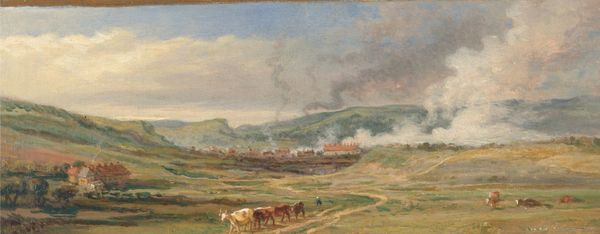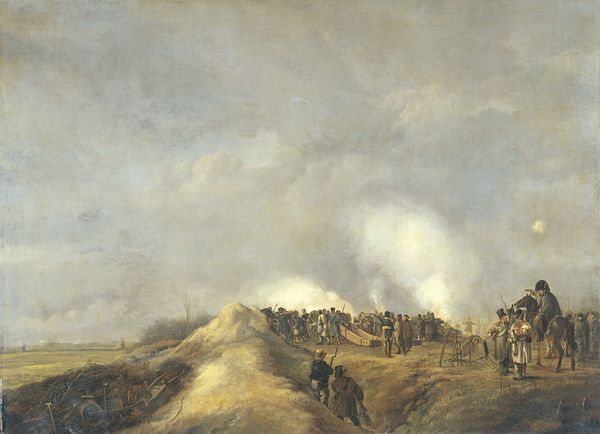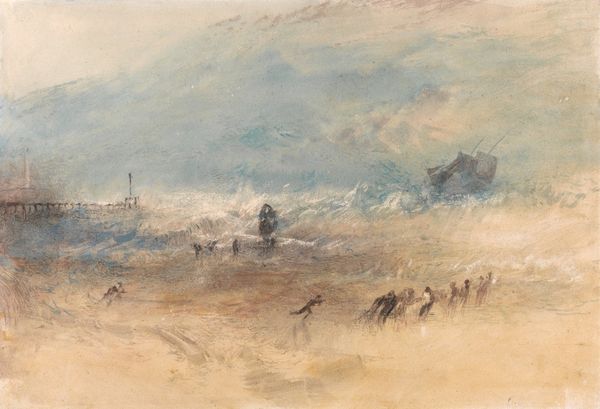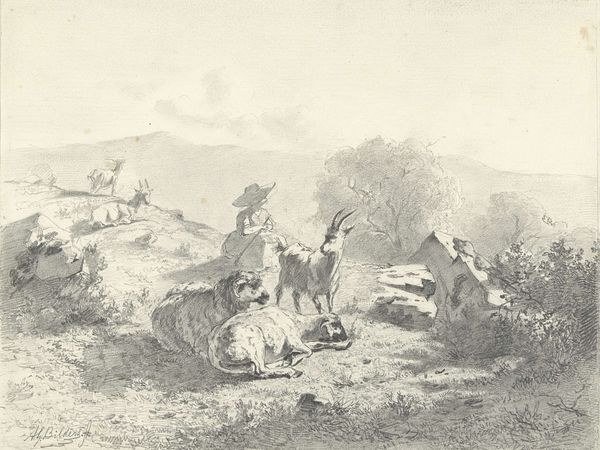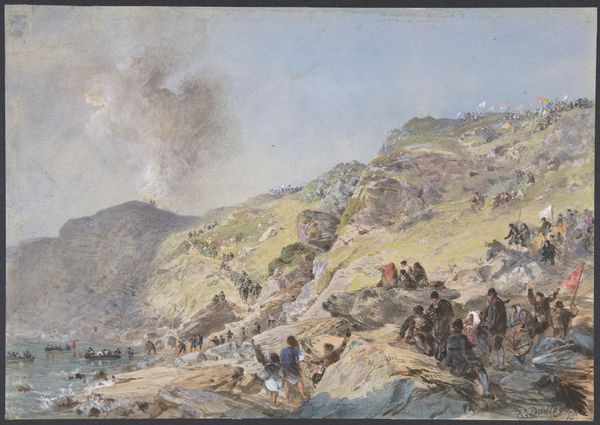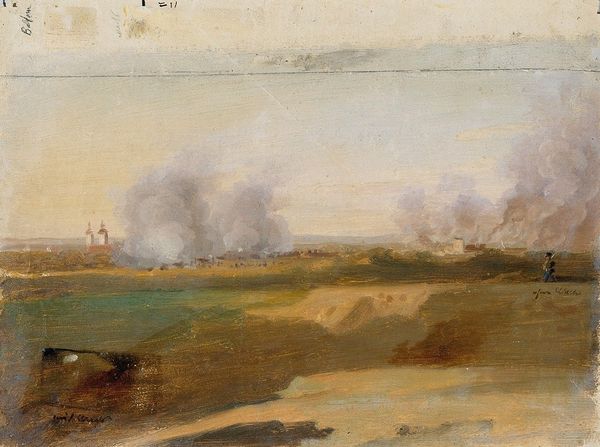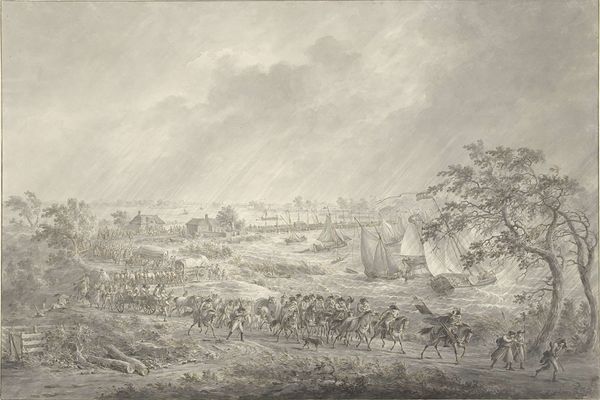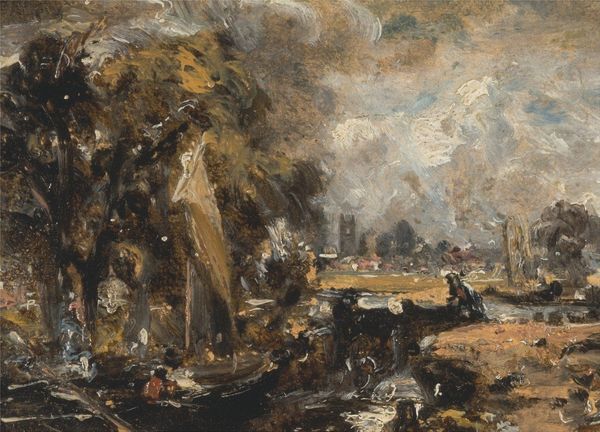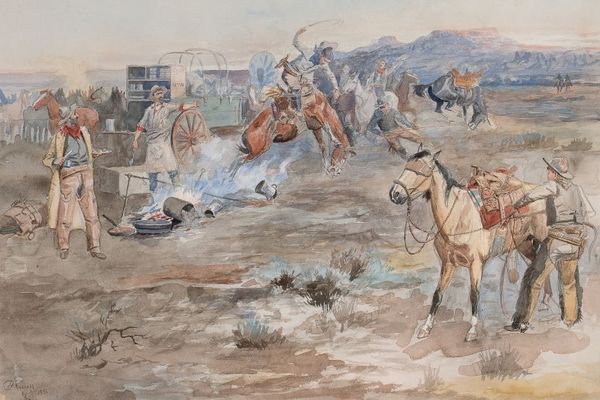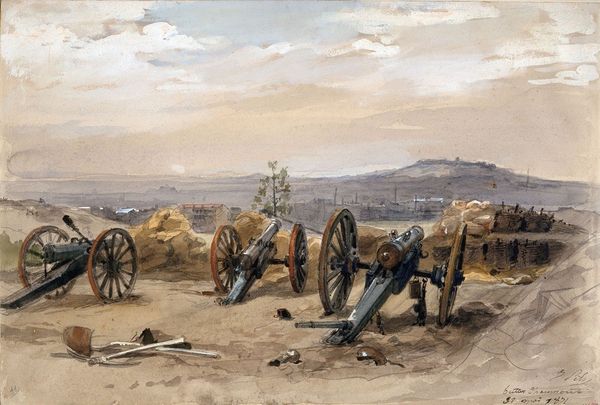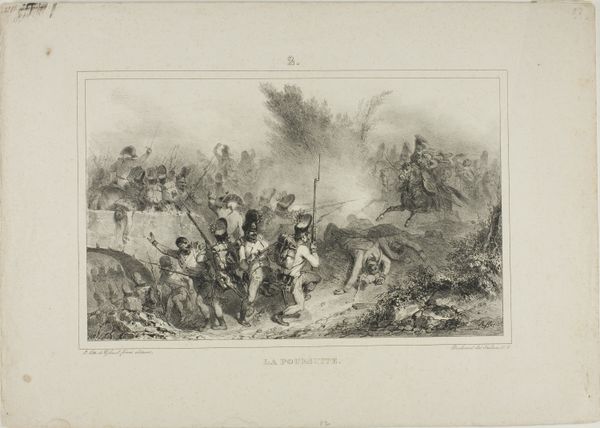
plein-air, watercolor
#
gouache
#
impressionism
#
plein-air
#
landscape
#
watercolor
#
genre-painting
Copyright: Public domain
Curator: Ah, this watercolor and gouache piece, "End of the Day," attributed to Mildred Anne Butler, just exudes a feeling of tranquility, despite the busy scene it depicts. The hazy light softens the edges, lending an almost dreamlike quality to the everyday task. Editor: Tranquility? I see something else entirely. This scene whispers of labor and industrialization. While the impressionistic style softens the harsh realities, let's not overlook the workers dwarfed by the steam engine—a symbol of progress, yes, but also of the shift in power and exploitation of labor. Curator: An intriguing point. I can definitely see how you would approach it through a lens of the human condition in a changing world. I am captured by the symbolism here; the puff of steam, almost like the breath of a weary beast of burden, the harvest mound, reaching skyward like some agrarian ziggurat. Editor: Absolutely. Notice the bodies. Butler strategically uses the watercolor to create a kind of haze over the workers making them barely visible in the scene, it hints at an erasure, the loss of the individual swallowed up by the machine. Think about that relationship, it is not pretty. Curator: The palette seems almost sepia-toned, giving it a sense of faded memory, of looking back on a simpler past. Yet, the steam engine anchors it in modernity. It seems there is this struggle present between a longing for old pastoral traditions and the inevitable forward march. Editor: Right, and it is crucial to ask for whom was this a 'simpler past?' Butler's impressionistic style gives off a certain airiness and timelessness, yet, even within this picturesque snapshot of labor, social hierarchies persist. Curator: These subtleties within "End of Day," remind us how our understanding of a seemingly straightforward image, depends upon the values that one carries and searches for within a piece. Editor: Exactly, and it speaks to how art is not merely a mirror reflecting reality, but an active participant shaping the narratives of power, gender, and labor that we choose to uphold.
Comments
No comments
Be the first to comment and join the conversation on the ultimate creative platform.
